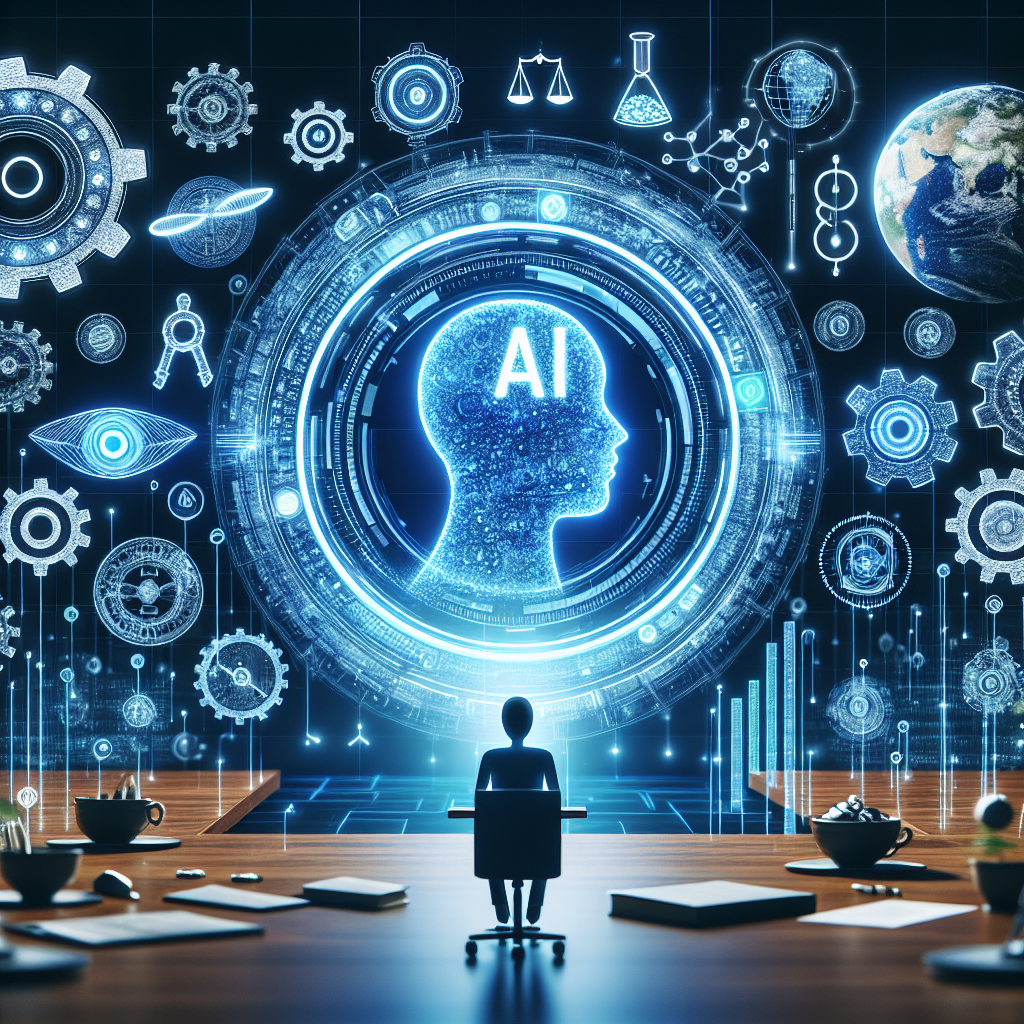In recent years, artificial intelligence (AI) has been gaining traction in various industries, including governance. The use of AI-driven solutions in governance can help improve efficiency, transparency, and accountability in decision-making processes. Leveraging AI in governance can lead to better outcomes for citizens, businesses, and government agencies. In this article, we will explore how AI-driven solutions can be used to enhance governance and address some common questions about this emerging technology.
AI-driven solutions for governance can be applied in various areas, such as policy-making, regulatory compliance, citizen engagement, and data analysis. By harnessing the power of AI, governments can make more informed decisions, streamline processes, and better serve their constituents.
One key area where AI can make a significant impact is in policy-making. AI algorithms can analyze vast amounts of data to identify patterns and trends, helping policymakers make more informed decisions. For example, AI can be used to predict the potential impact of policy changes on various stakeholders, simulate different scenarios, and recommend the most effective course of action.
AI can also be used to improve regulatory compliance. By automating compliance monitoring and enforcement processes, AI-driven solutions can help government agencies detect violations more efficiently and effectively. This can lead to a more level playing field for businesses and greater protection for consumers.
Another area where AI can be leveraged for better governance is citizen engagement. AI-powered chatbots and virtual assistants can provide citizens with instant access to information and services, improving their overall experience with government agencies. These AI-driven solutions can also help government agencies better understand the needs and preferences of their constituents, leading to more responsive and user-centric services.
Data analysis is another key area where AI can drive improvements in governance. By analyzing large volumes of data, AI algorithms can uncover insights that would be difficult or impossible to identify using traditional methods. This can help government agencies make more data-driven decisions, improve service delivery, and optimize resource allocation.
In addition to these benefits, AI-driven solutions can also help enhance transparency and accountability in governance. By automating processes and reducing human bias, AI can help ensure that decisions are made based on objective criteria and in the best interest of the public. This can help build trust between governments and their constituents, leading to more effective governance overall.
Despite the potential benefits of AI-driven solutions for governance, there are also some challenges and concerns that need to be addressed. One common concern is the potential for AI to reinforce existing biases and inequalities. AI algorithms are only as good as the data they are trained on, and if the data is biased, the AI system can perpetuate that bias. Governments must be vigilant in ensuring that AI-driven solutions are fair and equitable for all stakeholders.
Another challenge is the potential impact of AI on jobs. As AI automation becomes more prevalent in governance, there may be a risk of job displacement for certain roles. Governments will need to proactively address this issue by reskilling and upskilling workers to adapt to the changing landscape of work.
There are also concerns about privacy and data security when it comes to AI-driven solutions in governance. Governments must ensure that data is handled responsibly and in compliance with relevant regulations to protect the privacy and rights of their citizens.
Despite these challenges, the potential benefits of leveraging AI-driven solutions for better governance are substantial. By harnessing the power of AI, governments can improve efficiency, transparency, and accountability in decision-making processes, leading to better outcomes for citizens, businesses, and government agencies.
FAQs:
Q: What are some examples of AI-driven solutions in governance?
A: Some examples of AI-driven solutions in governance include AI-powered policy analysis tools, compliance monitoring systems, chatbots for citizen engagement, and data analytics platforms for decision-making.
Q: How can AI improve transparency and accountability in governance?
A: AI can improve transparency and accountability in governance by automating processes, reducing human bias, and ensuring that decisions are made based on objective criteria. This can help build trust between governments and their constituents.
Q: What are some challenges of using AI in governance?
A: Some challenges of using AI in governance include the potential for bias and inequality, job displacement, and concerns about privacy and data security. Governments must address these challenges to ensure that AI-driven solutions are fair, equitable, and responsible.
Q: How can governments address the potential impact of AI on jobs?
A: Governments can address the potential impact of AI on jobs by investing in reskilling and upskilling programs for workers, promoting lifelong learning, and creating policies that support a smooth transition to a more automated workforce.
In conclusion, leveraging AI-driven solutions for better governance can lead to significant improvements in efficiency, transparency, and accountability. By harnessing the power of AI, governments can make more informed decisions, streamline processes, and better serve their constituents. While there are challenges and concerns that need to be addressed, the potential benefits of using AI in governance are substantial. With careful planning and oversight, AI can help governments achieve their goals of delivering better services and outcomes for all stakeholders.

